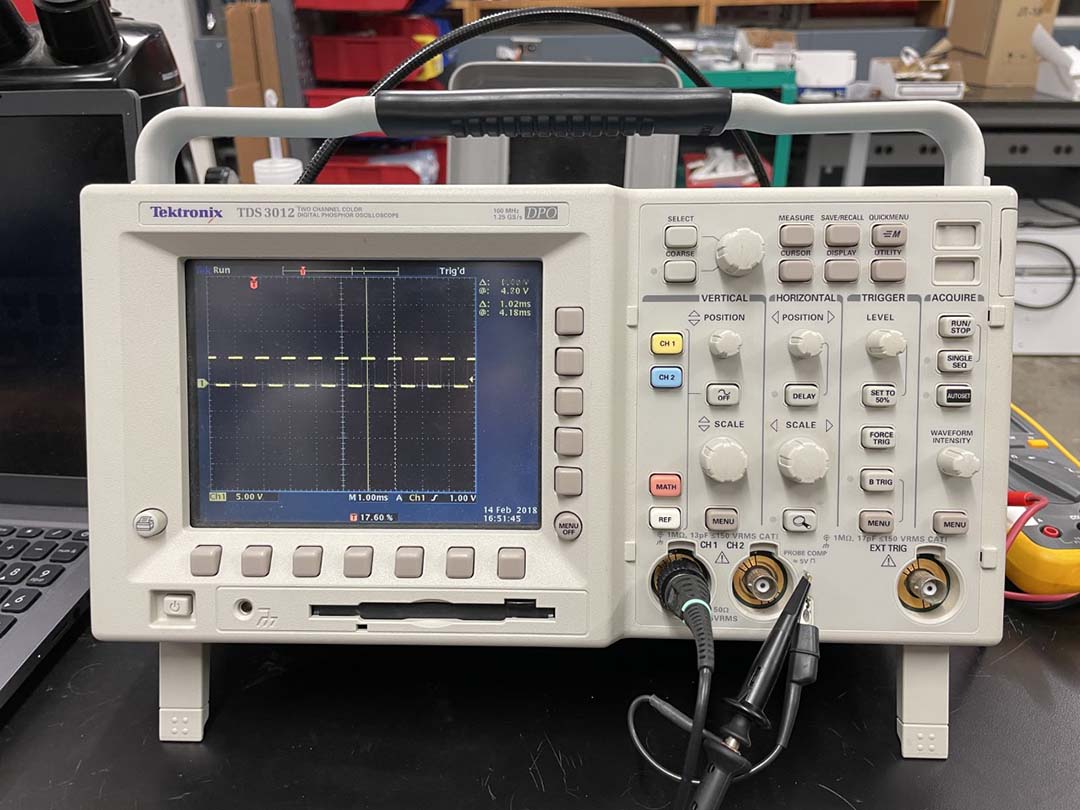Gabriella Perry
Testing Boards - Oscilloscopes + Multimeters
Multimeters:
- Multimeters can measure resistance, current, and voltage. Multimeters cannot be used to measure capacitors.
- The Ohms settings are used to measure resistance, the milliamps settings are used to measure current, and the voltage settings are used to measure voltage.
- The board must be powered to measure voltage.
- The multimeter can measure direct current or alternating current, but we will be using it to measure DC more typically.
- The scale of what you are measurings determines the scale of the setting. For example, if you are measuring a max voltage of 5 volts, you should use the 20V setting.
- You measure resistance, current and voltage by place the probes on your board. If you are measuring resistors, you place your probes on the ends of the resistors. If you are measuring voltage, you put the red probe on the pin you are measuring and the black probe on a ground pin or wire.
- You would have to break the circuit to measure current, which you would not typically do with a soldered board.
Oscilloscopes:
- Can visualize real-time changes in voltage in graph form.
- Can also be used to test serial communication.
- You can also calculate the baud rate using an oscilloscope by tracking how much time it takes for the board to send one bit of an 8 bit ASCII character.


